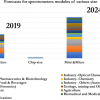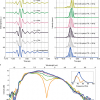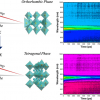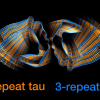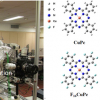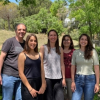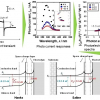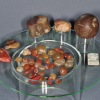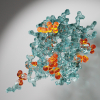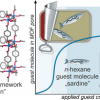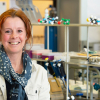Spectroscopy News
£29 million national scanning facility will underpin a broad range of clinical and neuroscience-focused research programmes in the UK.
A review of and prediction for the development of chip-based optical spectrometers.
Flame-sprayed nanoparticles have been used as a SERS substrate to detect low concentrations of parathion-ethyl, a toxic agricultural insecticide that is banned or restricted in most countries.
Thermo Fisher Scientific and TransMIT GmbH Center for Mass Spectrometric Developments have announced a co-marketing agreement to promote the use of a mass spectrometry imaging (MSI) platform for spatial multi-omics applications in pharma and clinical labs.
An international team of laser physicists of the attoworld team at LMU and the Max Planck Institute of Quantum Optics has achieved unprecedented control over light pulses in the mid-infrared wavelength range.
New work overviews the crucial charge carrier transfer processes and dynamics within perovskite active layers by means of time-resolved ultrafast laser spectroscopy.
NMR spectroscopy has shown how two types of tau proteins mix together in a nearly random way to generate the tangles seen in the brains of Alzheimer’s patients.
The Gordon F. Kirkbright and Edward Steers awards are seeking nominations.
UHV X-ray photoelectron spectroscopy and ultraviolet photoelectron spectroscopy systems have unravelled the Na interaction process at Na/CuPc and Na/F16CuPc interfaces.
GHGSat has equipped its existing satellite constellation with three more ABB-built optical sensors, increasing the frequency of observations and capacity to precisely pinpoint the source of methane emissions.
GC-MS “fingerprints” of sesquiterpene hydrocarbons have proved to be excellent markers for the geographic origin of olive oil.
Researchers at Tokyo Medical and Dental University use X-ray photoelectron spectroscopy to discover what gives titanium implants their remarkable biocompatibility, which may lead to more affordable medical and dental procedures.
Anne Brontë is renowned as a novelist, but a Raman analysis of her collection of stones has revealed her to be a skilled collector with an active interest in geology who accumulated a collection of attractive specimens before her death aged 29 in 1849.
Hyperpolarised water boosts signal intensities of proteins, DNA and membranes in NMR spectroscopy.
Researchers have used NMR spectroscopy to conduct the first assessment of metabolites in African savanna elephants, an important step in understanding the relationship between their metabolism and health.
A spectrometer is being used to measure the MOF and guest molecule absorbance of two differently polarised types of infrared light, enabling the first measurement of both guest–guest and guest–host interactions in real-time.
NIREOS has been awarded a European Union grant to develop a new imaging camera based on time-domain Fourier transform spectroscopy.
The award will be presented to a chemometrician, younger than 40 years of age, who has contributed significantly to the development of chemometrics in the last 5 years.
The first local managing director for Shimadzu Denmark, Joachim Holm, has been appointed.
Nearly €2.5M over a period of five years has been awarded to develop research that aims to better understand how mechanical forces and chemistry affect each other by studying the rupture and reformation of basic chemical bonds.

